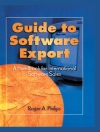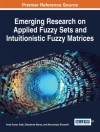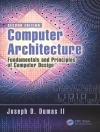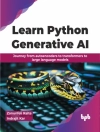There is not a single industry which will not be transformed by machine learning and Internet of Things (Io T). Io T and machine learning have altogether changed the technological scenario by letting the user monitor and control things based on the prediction made by machine learning algorithms. There has been substantial progress in the usage of platforms, technologies and applications that are based on these technologies. These breakthrough technologies affect not just the software perspective of the industry, but they cut across areas like smart cities, smart healthcare, smart retail, smart monitoring, control, and others. Because of these “game changers, ” governments, along with top companies around the world, are investing heavily in its research and development. Keeping pace with the latest trends, endless research, and new developments is paramount to innovate systems that are not only user-friendly but also speak to the growing needs and demands of society.
This volume is focused on saving energy at different levels of design and automation including the concept of machine learning automation and prediction modeling. It also deals with the design and analysis for Io T-enabled systems including energy saving aspects at different level of operation.
The editors and contributors also cover the fundamental concepts of Io T and machine learning, including the latest research, technological developments, and practical applications. Valuable as a learning tool for beginners in this area as well as a daily reference for engineers and scientists working in the area of Io T and machine technology, this is a must-have for any library.
Innehållsförteckning
Preface xv
1 Design of Low Power Junction-Less Double-Gate MOSFET 1
Namrata Mendiratta and Suman Lata Tripathi
1.1 Introduction 1
1.2 MOSFET Performance Parameters 2
1.3 Comparison of Existing MOSFET Architectures 3
1.4 Proposed Heavily Doped Junction-Less Double Gate MOSFET (AJ-DGMOSFET) 3
1.5 Heavily Doped JL-DG MOSFET for Biomedical Application 8
1.6 Conclusion 9
References 10
2 VLSI Implementation of Vedic Multiplier 13
Abhishek Kumar
2.1 Introduction 13
2.2 8×8 Vedic Multiplier 14
2.3 The Architecture of 8×8 Vedic Multiplier (VM) 16
2.3.1 Compressor Architecture 17
2.3.1.1 3:2 Compressor 18
2.3.1.2 4:3 Compressor 18
2.3.1.3 5:3 Compressor 18
2.3.1.4 8:4 Compressor 19
2.3.1.5 10:4 Compressor 19
2.3.1.6 12:5 Compressor 20
2.3.1.7 15:5 Compressor 21
2.3.1.8 20:5 Compressor 21
2.4 Results and Discussion 23
2.4.1 Instance Power 23
2.4.2 Net Power 24
2.4.3 8-Bit Multiplier 25
2.4.4 16-Bit Multiplier 26
2.4.5 Applications of Multiplier 27
2.5 Conclusion 28
References 28
3 Gas Leakage Detection from Drainage to Offer Safety for Sanitary Workers 31
Dr. D. Jeyabharathi, Dr. D. Kesavaraja and D. Sasireka
3.1 Introduction 31
3.1.1 IOT-Based Sewer Gas Detection 31
3.1.1.1 Io T Sensors 32
3.1.2 Objective 32
3.1.3 Contribution of this Chapter 33
3.1.4 Outline of the Chapter 33
3.2 Related Works 33
3.2.1 Sewer Gas Leakage Detection 33
3.2.2 Crack Detection 34
3.3 Methodology 34
3.3.1 Sewer Gas Detection 34
3.3.1.1 Proposed Tristate Pattern 35
3.3.2 Crack Detection 36
3.3.3 Experimental Setup 37
3.4 Experimental Results 39
3.5 Conclusion 40
References 40
4 Machine Learning for Smart Healthcare Energy-Efficient System 43
S. Porkodi, Dr. D. Kesavaraja and Dr. Sivanthi Aditanar
4.1 Introduction 43
4.1.1 Io T in the Digital Age 43
4.1.2 Using Io T to Enhance Healthcare Services 44
4.1.3 Edge Computing 44
4.1.4 Machine Learning 44
4.1.5 Application in Healthcare 45
4.2 Related Works 45
4.3 Edge Computing 47
4.3.1 Architecture 47
4.3.2 Advantages of Edge Computing over Cloud Computing 47
4.3.3 Applications of Edge Computing in Healthcare 48
4.3.4 Edge Computing Advantages 49
4.3.5 Challenges 50
4.4 Smart Healthcare System 50
4.4.1 Methodology 50
4.4.2 Data Acquisition and Io T End Device 51
4.4.3 Io T End Device and Backend Server 51
4.5 Conclusion and Future Directions 52
References 52
5 Review of Machine Learning Techniques Used for Intrusion and Malware Detection in WSNs and Io T Devices 57
Dr. Jeyabharathi, Dr. A. Sherly Alphonse, Ms. E.L. Dhivya Priya and Dr. M. Kowsigan
5.1 Introduction 57
5.2 Types of Attacks 58
5.3 Some Countermeasures for the Attacks 59
5.4 Machine Learning Solutions 59
5.5 Machine Learning Algorithms 59
5.6 Authentication Process Based on Machine Learning 60
5.7 Internet of Things (Io T) 62
5.8 Io T-Based Attacks 62
5.8.1 Botnets 62
5.8.2 Man-in-the-Middle 62
5.9 Information and Identity Theft 62
5.10 Social Engineering 63
5.11 Denial of Service 63
5.12 Concerns 63
5.13 Conclusion 64
References 64
6 Smart Energy-Efficient Techniques for Large-Scale Process Industries 67
B Koti Reddy and N V Raghavaiah
6.1 Pumps Operation 67
6.1.1 Parts in a Centrifugal Pump 68
6.1.2 Pump Efficiency 68
6.1.3 VFD 70
6.1.4 VFD and Pump Motor 72
6.1.5 Large HT Motors 73
6.1.6 Smart Pumps 73
6.2 Vapour Absorption Refrigeration System 74
6.2.1 Vapour Compression Refrigeration 74
6.2.2 Vapour Absorption Refrigeration 75
6.3 Heat Recovery Equipment 77
6.3.1 Case Study 77
6.3.2 Advantages of Heat Recovery 78
6.4 Lighting System 78
6.4.1 Technical Terms 78
6.4.2 Introduction 78
6.4.3 LED Lighting 79
6.4.4 Energy-Efficiency Techniques 79
6.4.5 Light Control with Io T 80
6.4.5.1 Wipro Scheme 80
6.4.5.2 Tata Scheme 80
6.4.6 EU Practices 81
6.5 Air Conditioners 82
6.5.1 Technical Terms 82
6.5.2 Types of Air Conditioners 82
6.5.3 Star Rating of BEE 83
6.5.4 EU Practices 83
6.5.5 Energy-Efficiency Tips 83
6.5.6 Inverter Air Conditioners 85
6.5.7 Io T-Based Air Conditioners 85
6.6 Fans and Other Smart Appliances 86
6.6.1 BLDC Fan Motors 87
6.6.2 Star Ratings 87
6.6.3 Group Drive of Fans 88
6.6.4 Other Smart Appliances 88
6.7 Motors 92
6.7.1 Motor Efficiency 92
6.7.2 Underrated Operation 93
6.7.3 Energy-Efficient Motors 94
6.7.3.1 Energy-Efficiency Ratings of BEE 94
6.7.3.2 Energy-Efficiency Ratings of IEC 94
6.7.4 Retrofit of Standard Motors with Energy-Efficient Motors 96
6.7.5 Other Salient Points 97
6.7.6 Use of Star-Delta Starter Motor 97
6.8 Energy-Efficient Transformers 98
6.8.1 IEC Recommendation 98
6.8.2 Super Conducting Transformers 99
References 99
7 Link Restoration and Relay Node Placement in Partitioned Wireless Sensor Network 101
Manwinder Singh and Anudeep Gandam
7.1 Introduction 101
7.2 Related Work 103
7.2.1 Existing Techniques 105
7.3 Proposed K-Means Clustering Algorithm 105
7.3.1 Homogenous and Heterogeneous Network Clustering Algorithms 105
7.3.2 Dynamic and Static Clustering 105
7.3.2.1 Routing 106
7.3.3 Flow Diagram 106
7.3.4 Objective Function 106
7.4 System Model and Assumption 108
7.4.1 Simulation Parameters 108
7.4.1.1 Residual Energy 108
7.4.1.2 End-to-End Delay 109
7.4.1.3 Number of Hops or Hop Count in the Network 109
7.5 Results and Discussion 109
7.6 Conclusions 114
References 115
8 Frequency Modulated PV Powered MLI Fed Induction Motor Drive for Water Pumping Applications 119
Arunkumar S, Mohana Sundaram N and K. Malarvizhi
8.1 Introduction 119
8.2 PV Panel as Energy Source 120
8.2.1 Solar Cell 120
8.3 Multi-Level Inverter Topologies 121
8.3.1 Types of Inverters Used for Drives 121
8.3.2 Multi-Level Inverters 121
8.4 Experimental Results and Discussion 122
8.4.1 PV Powered H Bridge Inverter-Fed Drive 123
8.4.2 PV Powered DCMLI Fed Drive 126
8.5 Conclusion and Future Scope 128
References 129
9 Analysis and Design of Bidirectional Circuits for Energy Storage Application 131
Suresh K, Sanjeevikumar Padmanaban and S Vivek
9.1 Introduction 131
9.2 Modes of Operation Based on Main Converters 133
9.2.1 Single-Stage Rectification 134
9.2.2 Single-Stage Inversion 135
9.2.3 Double-Stage Rectification 137
9.2.3.1 Duty Mode – Interval -I 137
9.2.3.2 Freewheeling Mode – Interval -II 138
9.2.4 Double-Stage Inversion 139
9.2.4.1 Charging Mode – Interval -I 140
9.2.4.2 Duty Mode – Interval -II 141
9.3 Proposed Methodology for Three-Phase System 141
9.3.1 Control Block of Overall System 143
9.3.2 Proposed Carrier-Based PWM Strategy 144
9.3.3 Experiment Results 145
9.4 Conclusion 148
References 148
10 Low-Power IOT-Enabled Energy Systems 151
Yogini Dilip Borole and Dr. C. G. Dethe
10.1 Overview 151
10.1.1 Conceptions 151
10.1.2 Motivation 152
10.1.3 Methodology 154
10.2 Empowering Tools 156
10.2.1 Sensing Components 156
10.2.2 Movers 159
10.2.3 Telecommunication Technology 160
10.2.4 Internet of Things Information and Evaluation 166
10.2.4.1 Distributed Evaluation 166
10.2.4.2 Fog Computing (Edge Computing) 167
10.3 Internet of Things within Power Region 167
10.3.1 Internet of Things along with Vitality Production 168
10.3.2 Smart Metropolises 168
10.3.3 Intelligent Lattice Network 171
10.3.4 Smart Buildings Structures 172
10.3.5 Powerful Usage of Vitality in Production 173
10.3.6 Insightful Transport 174
10.4 Difficulties – Relating Internet of Things 174
10.4.1 Vitality Ingestion 178
10.4.2 Synchronization via Internet of Things through Sub-Units 178
10.4.3 Client Confidentiality 180
10.4.4 Safety Challenges 180
10.4.5 Io T Standardization and Architectural Concept 181
10.5 Upcoming Developments 182
10.5.1 Io T and Block Chain 182
10.5.2 Artificial Intelligence and Io T 184
10.5.3 Green Io T 185
10.6 Conclusion 187
References 188
11 Efficient Renewable Energy Systems 199
Prabhansu and Nayan Kumar
Introduction 199
11.1 Renewable-Based Available Technologies 200
11.1.1 Wind Power 201
11.1.1.1 Modeling of the Wind Turbine Generator (WTG) 201
11.1.1.2 Categorization of Wind Turbine 202
11.1.2 Solar Power 202
11.1.2.1 PV System 202
11.1.2.2 Network-Linked Photovoltaic Grid-Connected PV Set-Up 203
11.1.3 Tidal Energy 203
11.1.4 Battery Storage System 204
11.1.5 Solid Oxide Energy Units for Enhancing Power Life 204
11.1.5.1 Common Utility of SOFC 204
11.1.5.2 Integrated Solid Oxide Energy Components and Sustainable Power Life 205
11.2 Adaptability Frameworks 206
11.2.1 Distributed Energy Resources (DER) 206
11.2.2 New Age Grid Connection 209
11.3 Conclusion 210
References 211
12 Efficient Renewable Energy Systems 215
Dr. Arvind Dhingra
12.1 Introduction 215
12.1.1 World Energy Scenario 215
12.2 Sources of Energy: Classification 217
12.3 Renewable Energy Systems 217
12.3.1 Solar Energy 218
12.3.2 Wind 218
12.3.3 Geothermal 218
12.3.4 Biomass 218
12.3.5 Ocean 218
12.3.6 Hydrogen 218
12.4 Solar Energy 218
12.5 Wind Energy 223
12.6 Geothermal Energy 225
12.7 Biomass 226
12.7.1 Forms of Biomass 226
12.8 Ocean Power 227
12.9 Hydrogen 227
12.10 Hydro Power 227
12.11 Conclusion 227
References 227
13 Agriculture-Io T-Based Sprinkler System for Water and Fertilizer Conservation and Management 229
Dilip Kumar and Ujala Choudhury
13.1 Introduction 229
13.1.1 Novelty of the Work 232
13.1.2 Benefit to Society 232
13.2 Development of the Proposed System 233
13.3 System Description 233
13.3.1 Study of the Crop Under Experiment 233
13.3.2 Hardware of the System 235
13.3.3 Software of the System 235
13.4 Layers of the System Architecture 236
13.4.1 Application Layer 236
13.4.2 Cloud Layer 237
13.4.3 Network Layer 237
13.4.4 Physical Layer 237
13.5 Calibration 237
13.6 Layout of the Sprinkler System 239
13.7 Testing 239
13.8 Results and Discussion 241
13.9 Conclusion 242
References 242
14 A Behaviour-Based Authentication to Internet of Things Using Machine Learning 245
Mohit Goyal and Durgesh Srivastava
14.1 Introduction 246
14.2 Basics of Internet of Things (Io T) 246
14.2.1 The Io T Reference Model 248
14.2.2 Working of Io T 249
14.2.2.1 Device 249
14.2.2.2 Connectivity to Cloud 250
14.2.2.3 Data Analysis 250
14.2.2.4 User Interface 250
14.2.3 Utilization of Internet of Things (Io T) 250
14.3 Authentication in Io T 251
14.3.1 Methods of Authentication 251
14.3.1.1 Authentication Based on Knowledge 252
14.3.1.2 Authentication Based on Possession 252
14.3.1.3 Authentication Based on Biometric 253
14.4 User Authentication Based on Behavioral-Biometric 255
14.4.1 Machine Learning 256
14.4.1.1 Supervised Machine Learning 256
14.4.1.2 Unsupervised Machine Learning 256
14.4.2 Machine Learning Algorithms 257
14.4.2.1 RIPPER 257
14.4.2.2 Multilayer Perceptron 257
14.4.2.3 Decision Tree 257
14.4.2.4 Random Forest 258
14.4.2.5 Instance-Based Learning 258
14.4.2.6 Bootstrap Aggregating 258
14.4.2.7 Naïve Bayes 258
14.5 Threats and Challenges in the Current Security Solution for Io T 258
14.6 Proposed Methodology 259
14.6.1 Collection of Gait Dataset 259
14.6.2 Gait Data Preprocessing 259
14.6.3 Reduction in Data Size 260
14.6.4 Gaits Feature 260
14.6.5 Classification 260
14.7 Conclusion and Future Work 261
References 261
15 A Fuzzy Goal Programming Model for Quality Monitoring of Fruits during Shipment Overseas 265
Pushan Kr. Dutta, Somsubhra Gupta, Simran Kumari and Akshay Vinayak
15.1 Introduction 265
15.2 Proposed System 266
15.2.1 Problem Statement 266
15.2.2 Overview 266
15.2.3 System Components 268
15.3 Work Process 271
15.3.1 System Hardware 271
15.3.2 Connections and Circuitry 271
15.4 Optimization Framework 271
15.4.1 Fuzzy Goal Description 271
15.4.2 Characterizing Fuzzy Membership Function 272
15.4.3 Construction of FGP Model 272
15.4.4 Definition of Variables and Parameters 273
15.4.5 Fuzzy Goal Description 274
15.5 Creation of Database and Website 275
15.5.1 Hosting PHP Application and Creation of My SQL Database 275
15.5.2 Creation of API (Application Programming Interfaces) Key 275
15.5.2.1 $api_key_value = “3m M44Ua C2Dj Fc V_63GZ14a WJc RDNm YBMsxceu”; 275
15.5.2.2 Preparing Mysql Database 275
15.5.2.3 Structured Query Language (SQL) 275
15.5.2.4 Use of HTTP (Hypertext Transfer Protocol) in Posting Request 276
15.5.2.5 Adding a Dynamic Map to the Website 277
15.5.2.6 Adding Dynamic Graph to the Website 277
15.5.2.7 Adding the Download Option of the Data Set 278
15.6 Libraries Used and Code Snipped 278
15.7 Mode of Communication 280
15.8 Conclusion 280
Abbreviations 282
References 282
16 Internet of Things – Definition, Architecture, Applications, Requirements and Key Research Challenges 285
Dushyant Kumar Singh, Himani Jerath and P. Raja
16.1 Introduction 285
16.2 Defining the Term Internet of Things (Io T) 286
16.3 Io T Architecture 287
16.4 Applications of Internet of Things (Io T) 289
16.5 Requirement for Internet of Things (Io T) Implementation 290
16.6 Key Research Challenges in Internet of Things (Io T) 291
16.6.1 Computing, Communication and Identification 291
16.6.2 Network Technology 292
16.6.3 Greening of Internet of Things (Io T) 292
16.6.4 Security 293
16.6.5 Diversity 293
16.6.6 Object Safety and Security 293
16.6.7 Data Confidentiality and Unauthorized Access 293
16.6.8 Architecture 293
16.6.9 Network and Routing Information Security 293
References 294
17 Fin FET Technology for Low-Power Applications 297
Bindu Madhavi, Suman Lata Tripathi and Bhagwan Shree Ram
17.1 Introduction 297
17.2 Exiting Multiple-Gate MOSFET Architectures 299
17.3 Fin FET Design and Analysis 301
17.4 Low-Power Applications 304
17.4.1 Fin FET-Based Digital Circuit Design 304
17.4.2 Fin FET-Based Memory Design 304
17.4.3 Fin FET-Based Biosensors 304
17.5 Conclusion 305
References 305
18 An Enhanced Power Quality Single-Source Large Step-Up Switched-Capacitor Based Multi-Level Inverter Configuration with Natural Voltage Balancing of Capacitors 307
Mahdi Karimi, Paria Kargar, Kazem Varesi and Sanjeevikumar Padmanaban
18.1 Introduction 307
18.2 Suggested Topology 309
18.2.1 Circuit Configuration 309
18.2.2 Generation of Output Voltage Steps 310
18.2.3 Voltage Stress of Switches 320
18.3 Cascaded Configuration of Suggested Topology 320
18.4 Modulation Technique 321
18.5 Power Loss Analysis 324
18.5.1 Conduction Losses 324
18.5.2 Switching Losses 326
18.5.3 Capacitor Losses 327
18.6 Design of Capacitors 328
18.7 Comparative Analysis 330
18.8 Simulation Results 333
18.9 Conclusions 336
References 336
Index 339
Om författaren
Suman Lata Tripathi, Ph D, is a professor at Lovely Professional with more than seventeen years of experience in academics. She has published more than 45 research papers in refereed journals and conferences. She has organized several workshops, summer internships, and expert lectures for students, and she has worked as a session chair, conference steering committee member, editorial board member, and reviewer for IEEE journals and conferences. She has published one edited book and currently has multiple volumes scheduled for publication, including volumes available from Wiley-Scrivener.
Dushyant Kumar Singh, is an assistant professor and Head of Embedded Systems Domain at Lovely Professional University. With a masters degree from Punjab Engineering College, University of Technology, Chandigarh, he has several years of industrial experience and more than ten years of teaching experience.
Sanjeevikumar Padmanaban, Ph D, is a faculty member with the Department of Energy Technology, Aalborg University, Esbjerg, Denmark. He has almost ten years of teaching, research and industrial experience and is an associate editor on a number of international scientific refereed journals. He has published more than 300 research papers and has won numerous awards for his research and teaching.
P. Raja is currently working as an assistant professor at Lovely Professional University. His expertise is in VLSI and embedded systems. He has more than 14 years of experience with 5 years in embedded industry. He has 14 publications in UGC-approved and other reputable journals. He also has 10 patents to his credit.












